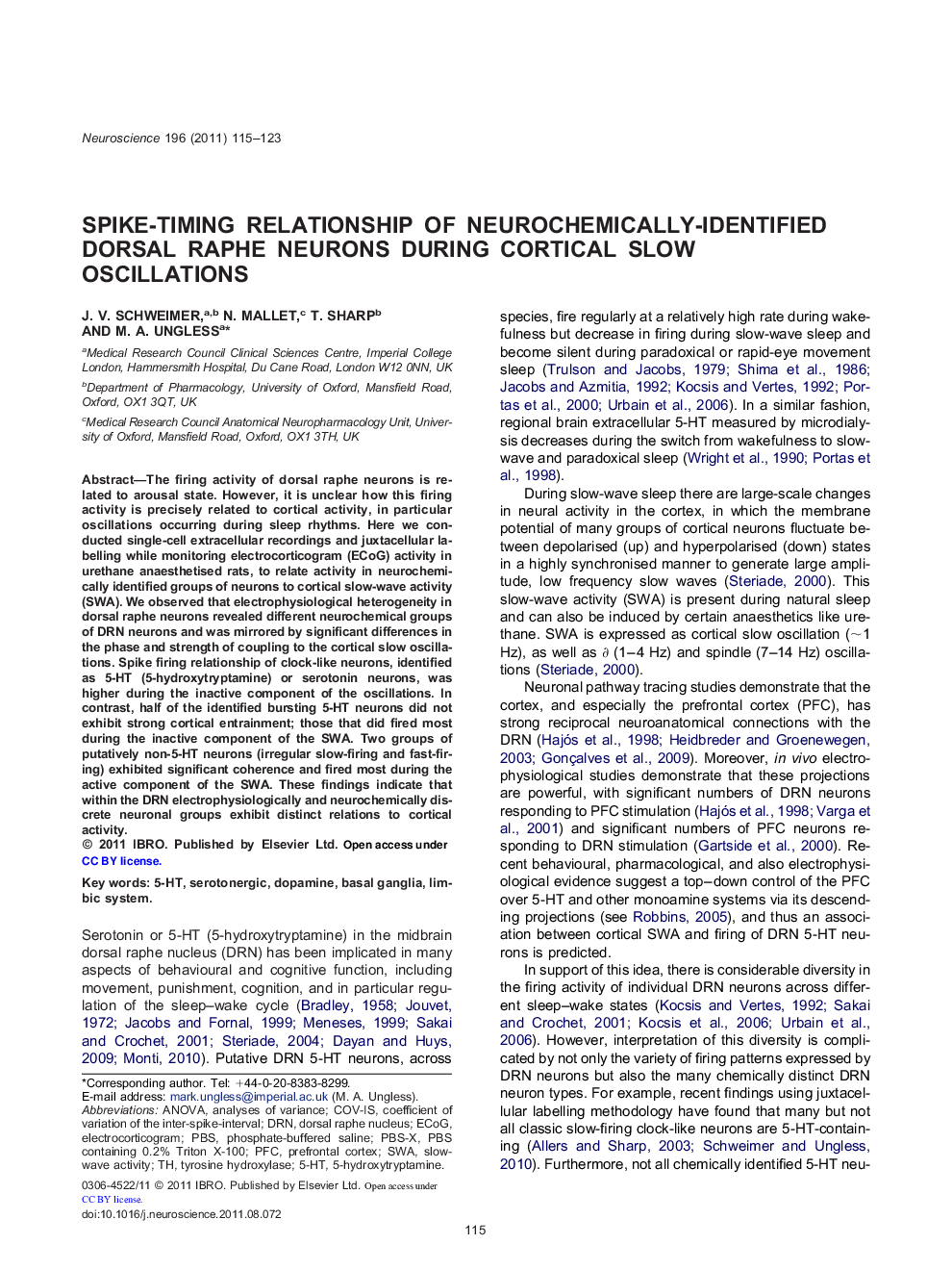| کد مقاله | کد نشریه | سال انتشار | مقاله انگلیسی | نسخه تمام متن |
|---|---|---|---|---|
| 6276222 | 1614880 | 2011 | 9 صفحه PDF | دانلود رایگان |

The firing activity of dorsal raphe neurons is related to arousal state. However, it is unclear how this firing activity is precisely related to cortical activity, in particular oscillations occurring during sleep rhythms. Here we conducted single-cell extracellular recordings and juxtacellular labelling while monitoring electrocorticogram (ECoG) activity in urethane anaesthetised rats, to relate activity in neurochemically identified groups of neurons to cortical slow-wave activity (SWA). We observed that electrophysiological heterogeneity in dorsal raphe neurons revealed different neurochemical groups of DRN neurons and was mirrored by significant differences in the phase and strength of coupling to the cortical slow oscillations. Spike firing relationship of clock-like neurons, identified as 5-HT (5-hydroxytryptamine) or serotonin neurons, was higher during the inactive component of the oscillations. In contrast, half of the identified bursting 5-HT neurons did not exhibit strong cortical entrainment; those that did fired most during the inactive component of the SWA. Two groups of putatively non-5-HT neurons (irregular slow-firing and fast-firing) exhibited significant coherence and fired most during the active component of the SWA. These findings indicate that within the DRN electrophysiologically and neurochemically discrete neuronal groups exhibit distinct relations to cortical activity.
â¶DRN neurons exhibit heterogeneous firing in relation to cortical oscillations. â¶Clock-like 5-HT neurons fire most during inactive component of the oscillation. â¶Half of bursting 5-HT neurons did not exhibit coupling to the oscillation. â¶Non-5-HT neurons fired most during the active component of the oscillation.
Journal: Neuroscience - Volume 196, 24 November 2011, Pages 115-123